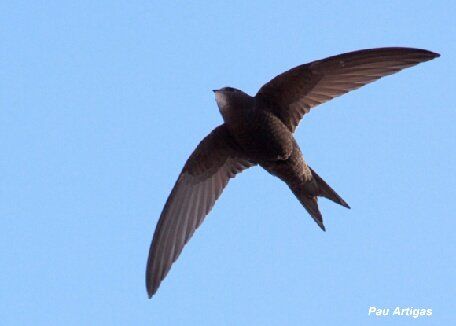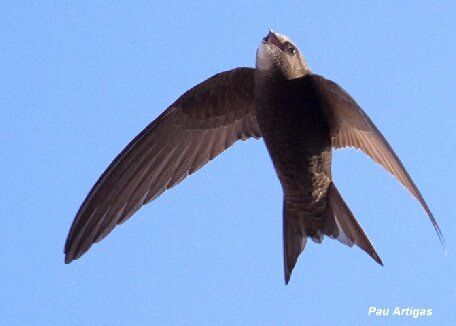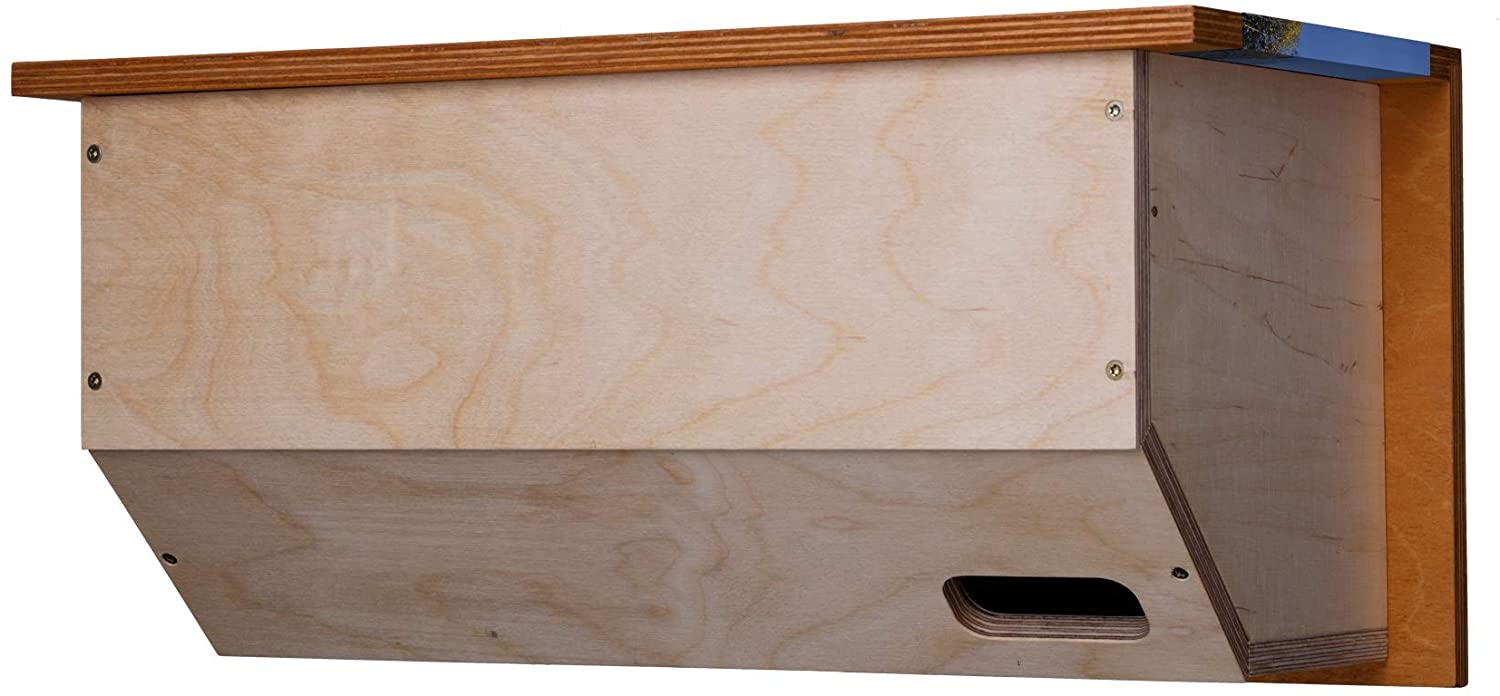The common swift (Apus apus) is a medium-sized bird, superficially similar to the barn swallow or house martin but somewhat larger, though not stemming from those passerine species, being in the order Apodiformes. The resemblances between the groups are due to convergent evolution, reflecting similar contextual development. The swifts' nearest relatives are the New World hummingbirds and the Southeast Asian treeswifts.
Its scientific name Apus is Latin for a swift, thought by the ancients to be a type of swallow with no feet (from Ancient Greek α, a, "without", and πούς, pous, "foot").
Swifts have very short legs which they use primarily for clinging to vertical surfaces (hence the German name Mauersegler, literally meaning "wall-glider"). They never settle voluntarily on the ground, where they would be vulnerable to accidents and predation, and non-breeding individuals may spend up to ten months in continuous flight.
Common swifts are 16–17 cm (6.3–6.7 in) long with a wingspan of 38–40 cm (15–16 in) and entirely blackish-brown except for a small white or pale grey patch on their chins which is not visible from a distance. They have a short forked tail and very long swept-back wings that resemble a crescent or a boomerang.
Their call is a loud scream in two different tone pitches, the higher of which issues from the female. They often form 'screaming parties' during summer evenings, when 10–20 swifts will gather in flight around their nesting area, calling out and being answered by nesting swifts. Larger "screaming parties" are formed at higher altitudes, especially late in the breeding season. The purpose of these parties is uncertain, but may include ascending to sleep on the wing, while still breeding adults tend to spend the night in the nest.[citation needed] Tracking swifts at their breeding colonies using radar has revealed that individuals often occur in flocks during evening ascent and dawn descent but not during the subsequent evening descent or prior dawn ascent, suggesting that this flocking benefits the swifts via cue acquisition and information exchange between individuals or through extending social behaviour.
Wikipedia
Swifts will take to artificial nests such as the one featured above.





